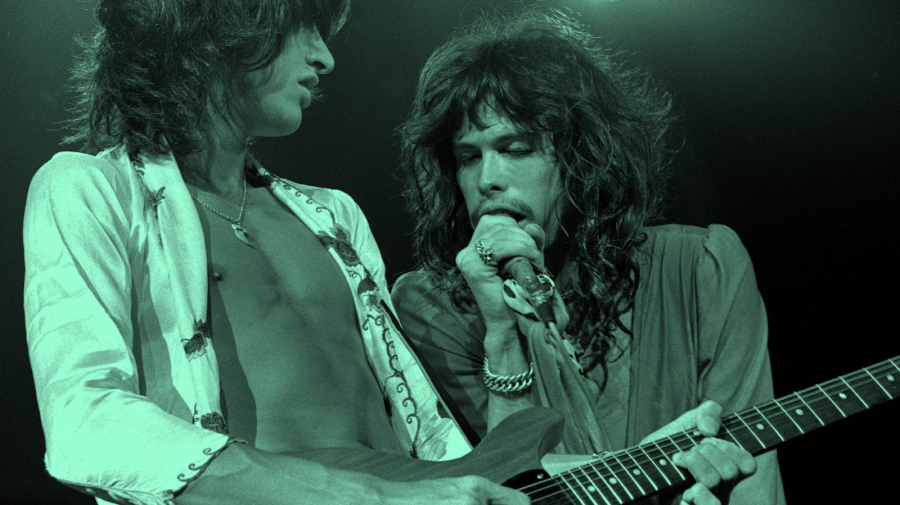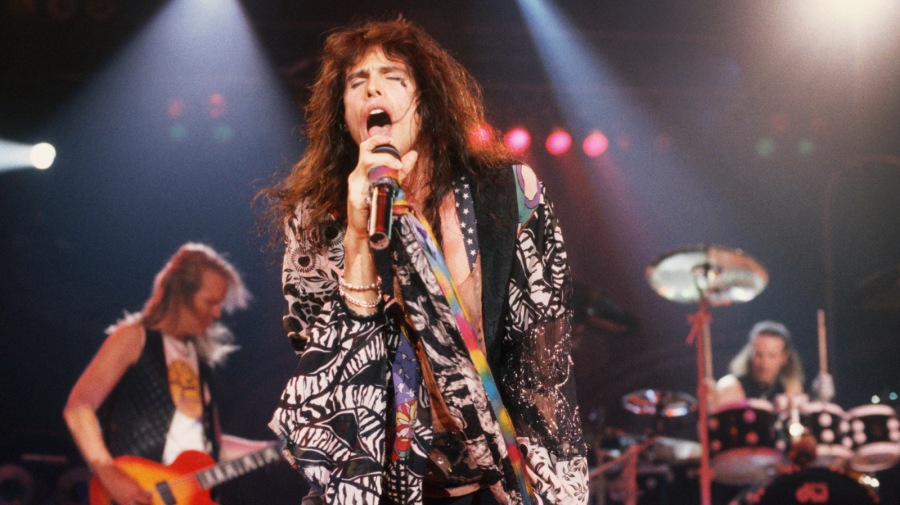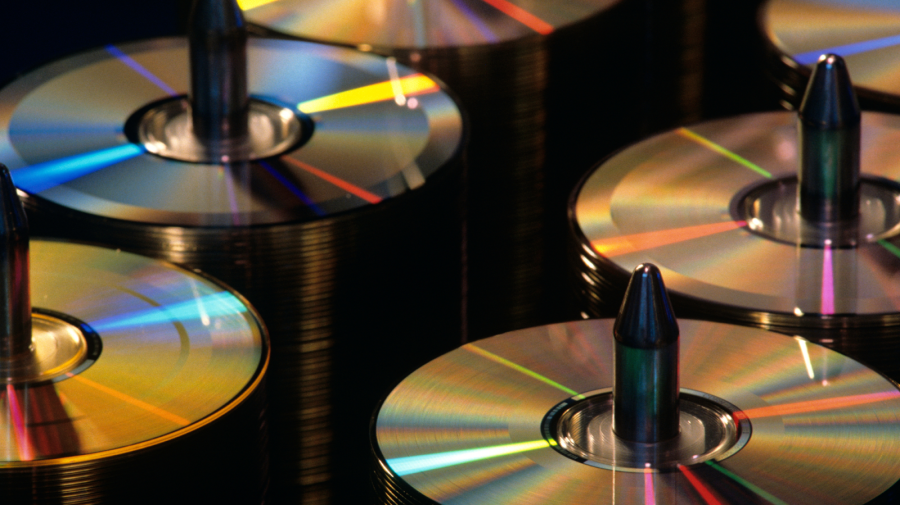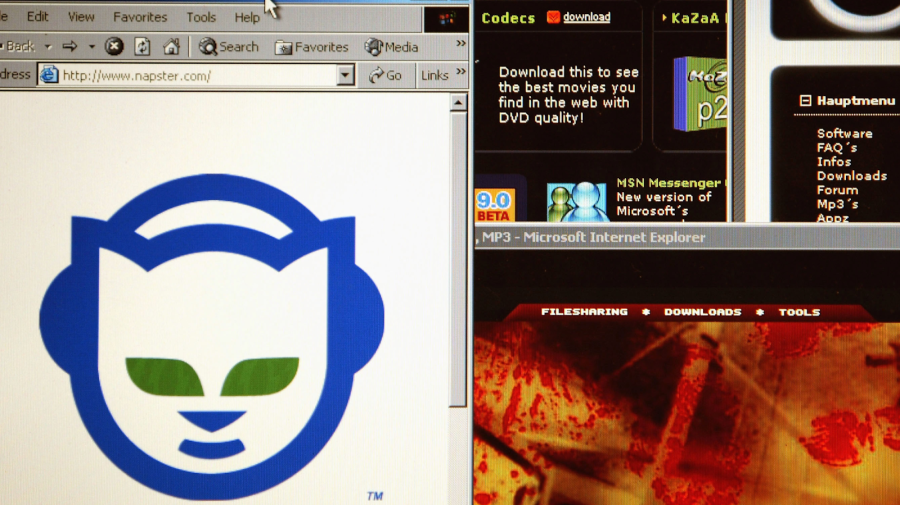
Today, the music industry doesn’t operate as it once did. Well before the internet era, people had very few choices regarding when and how they could listen to their favorite artists and songs. Aside from tuning into radio stations or hitting up the local jukebox, buying a physical album — or single — was really the only choice. Unlike now, there weren’t many ways to listen to free music.
Bu, over time, people got creative. When cassette tapes took the torch from vinyl records, it was common for inventive listeners to make mixed tapes by recording their favorite radio stations. Still, free music — on demand — wasn’t easy to come by. But back in the early ‘90s the landscape started to shift. And it was all thanks to rock band Aerosmith making a major decision.
The Moment Aerosmith Changed the Music Industry With Free Music
Twenty-eight years ago, Aerosmith did something entirely unexpected. The “Dream On” band and its label, Geffen Records, partnered with CompuServe — one of the online service provider giants of the ‘80s and ‘90s — and released what’s often dubbed the first digitally downloadable song.
The song in question, “Head First”, was previously just a bonus track on the Eat the Rich CD single. While the song “Eat the Rich”, a single off of the band’s Get a Grip album, first debuted in 1993, “Head First” wasn’t part of the band’s official discography until the single hit shelves.
As a major ISP (internet service provider) at the time, CompuServe had astounding reach and a solid customer base. Thanks to this partnership, Aerosmith’s previously unreleased song was suddenly available to two million CompuServe customers — all at no cost.

The WAV file was approximately 4.3MB in size, though the mono version was notably smaller. For those who wanted the larger option, download times could take upward of 90 minutes based on the typical download speeds of the day. In the end, about 10,000 people downloaded “Head First” during the two-week period the song was available.
“If our fans are out there driving down that information superhighway, then we want to be playing at the truck stop,” Aerosmith’s lead singer Steven Tyler stated at the time. “This is the future, so let’s get it going.”
How the Move Shook the Music Industry
At the time of the release of “Head First”, the music industry was understandably wary of the internet. There was significant concern about the availability of free music — and what that availability would mean for record labels, retail product sales and album manufacturers.
Of course, the bandwidth and computer storage requirements made downloading entire albums impractical. In 1994, hard drives on home computers mainly ranged between 200 and 400 MB, and modem speeds of just 9.6 to 14.4 kbps were common. As a result, the time for downloading a single track often settled in at the 60-to-90-minute range.

Still, the writing was on the wall. Listeners’ expectations were already changing. Initially, song downloads were a novelty. But as computer hard drives grew and internet connections improved, music fans began leveraging tools to access their favorite bands’ content digitally. As you might expect, various companies — the forerunners to music-streaming platforms — started looking for the potential in the relatively new paradigm.
The Rise of Free Music
As mentioned above, the music industry was change-averse when it came to all things internet, and that fear mainly centered on how the availability of free music could harm profits. However, that resistance left a void. One of the most noteworthy shifts was the advent of Napster, a bastion of the free music revolution.
Napster, a peer-to-peer file-sharing service that began its rise to fame in the late 1990s, let people all across the globe digitize their music. Then, anyone who wanted a particular track or album could simply head online and transfer the file. The service was completely free, and that attracted a slew of users. Thanks to Napster, the CD era began giving way to the MP3 file format in earnest.
But Napster — and other services that followed suit — soon came under fire. Several big-name record labels, and others involved in the music industry, questioned the legality of such services. Essentially, this forced the platform to change, but the music industry couldn’t stop the momentum Napster had created.

In the early 2000s, iTunes launched, requiring users to pay for every track — though at the low, low cost of 99 cents, it was an attractive option. You no longer had to buy a whole album — you could pick and choose what you wanted, and make playlists or mixed CDs with ease. It’s no wonder the iPod, and other MP3 players, became so ubiquitous.
Apple’s iTunes partnered up with Starbucks to offer some free music options, too. The Song of the Day program allowed customers to discover new songs, genres, singers and bands. Plus, with two major brands backing this initiative, free music became more of an expectation than a fun rarity.
Around this time, internet radio platforms like Pandora came to be, too, allowing listeners to discover new music with ease. All of this to say, even if record labels weren’t thrilled with this shift, there was little they could do to stop it.
The Fall of Digital Downloads
Physical album sales sank with the rise of the internet. By the mid-2010s, CD players were disappearing from cars as people began favoring digital alternatives. In 2021, vinyl actually outpaced CDs in terms of sales. However, not all digital forms of music were safe. Paid downloads also began declining in the mid-2010s, all thanks to the rise of streaming music.

Streaming music services, like Spotify, essentially feed that drive for free music — or should we say, “free” music. With different subscription levels, users can access music without spending a dime, so long as they’re willing to put up with ads. Others might pay just $10 or so a month to access millions of songs and artists.
This creates a real sense of value, particularly since many users see the monthly fee not as paying for music but as a means of ditching disruptive ads. The bottom line? All of this kind of makes the idea of paying for music feel antiquated.
A love for free music — free digital music — has been in the making for nearly 30 years. An entire generation has risen since Aerosmith took that initial step, a generation that never lived in a world where free music through the internet wasn’t an option. Where the world of music will head next isn’t completely clear, but there’s a good chance “free” will remain part of the industry’s landscape for years — if not decades — to come.






